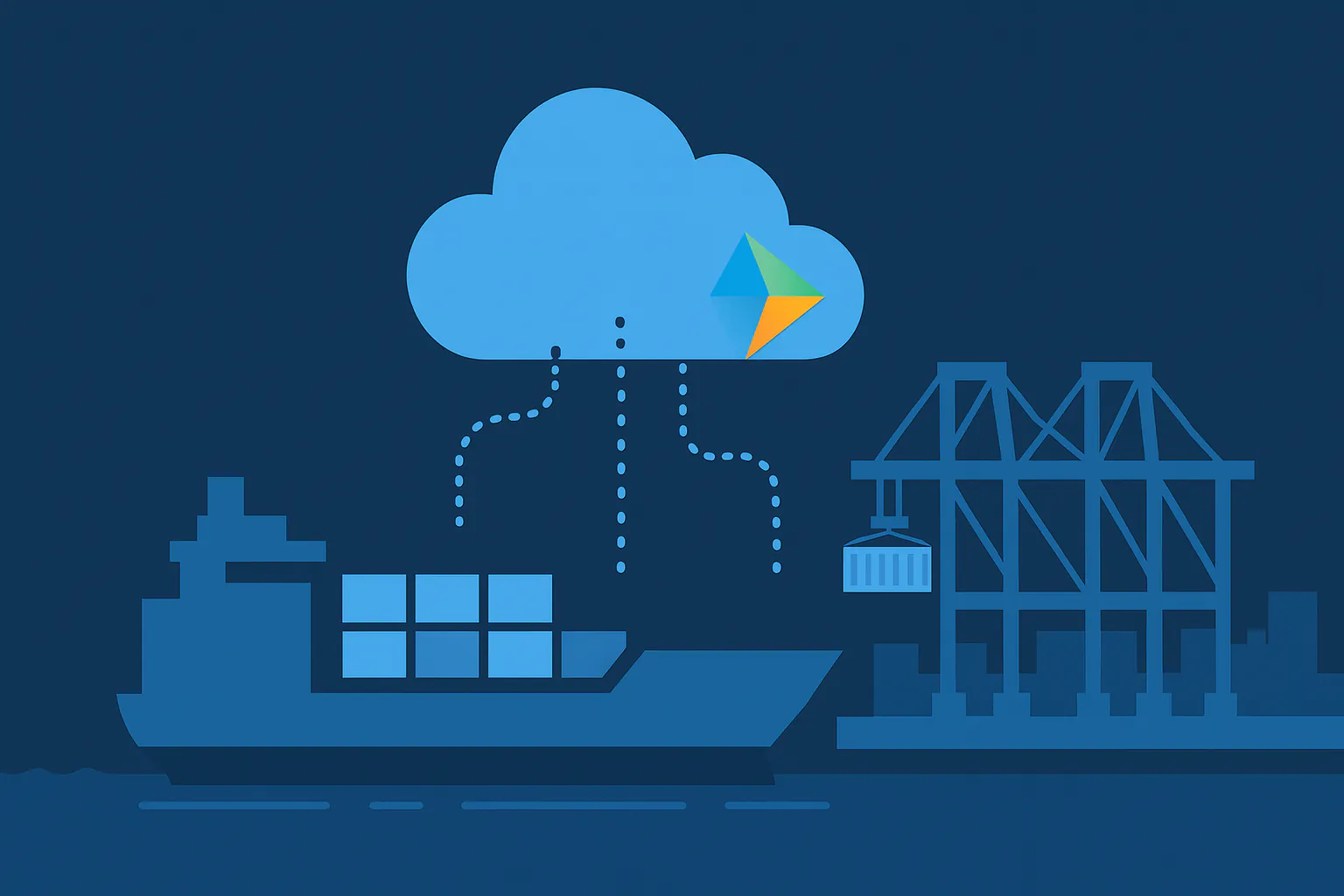Cloud Migration Success Stories
Key Takeaways
- Successful moves follow a simple rhythm: assess, build secure Azure landing zones, migrate in waves, then keep tuning cost, performance, and security.
- Real examples show the payoff: NBA turns live stats into fan-friendly insights, Walmart speeds everyday work, and Maersk strengthens global operations.
- YTG makes it practical with a phased plan and post-migration optimization so value keeps growing long after cutover.

Cloud migration success stories are easy to spot when you know what to look for. Teams move away from brittle, aging systems and gain room to grow. Releases become routine. Reliability goes up. Costs track closer to usage and value. Most important, the cloud becomes a base for new customer experiences that were hard to deliver on older platforms. This article shares three real-world examples and then shows how Yocum Technology Group helps clients follow the same proven path on Microsoft Azure.

Why cloud migration wins keep stacking up
Many organizations begin cloud migration because a deadline is looming or hardware is due for refresh. The best outcomes happen when you treat the move as a step toward a better operating model, not just a lift and shift. That means setting clear goals, building a secure Azure foundation, moving in waves, and tuning cost and performance as you go. When those habits take root, the stories get better with time. Teams ship faster. Incidents fall. Customers notice the polish.
Below are three short, people-first examples you can reference in your own conversations about cloud migration success stories. They are not one-off miracles. They follow a simple pattern that any company can adopt with the right plan and a steady guide.
NBA brings live stats to life
The NBA uses Microsoft Azure to power features in the NBA App that turn live game data into short, plain-language notes. Fans no longer face a wall of numbers. Instead, they see quick explanations that tell them what just happened and why it matters. The work started with moving key workloads to Azure, then adding data services and analytics to scale the experience to millions of viewers. This is a tight example of cloud migration first, then stepwise modernization that makes the product more enjoyable for fans.
Check out the full article here
Walmart builds a cloud base for smarter work
Walmart runs major workloads on Azure and introduced “My Assistant,” a Microsoft-powered productivity app used by thousands of office associates. A solid cloud base keeps ompany data in one place and makes everyday tasks faster. People spend more time on high-value work and less time hunting for information. As Walmart grows its cloud migration footprint, new tools land more smoothly because the foundation is already in place. That is a rhythm many enterprises want: move, stabilize, improve, repeat.
Check out the full article here
Maersk scales global logistics on Azure
Maersk standardized on Azure as its core platform. By moving data center workloads and building new services in the cloud, Maersk improved time to market and resilience across global operations. The platform now supports new digital products while daily operations remain steady. It is a classic pattern behind many cloud migration success stories. First, establish the target environment. Next, migrate in waves. Then keep tuning cost, performance, and security as the business evolves.
Check out the full article here
The pattern behind cloud migration success stories
If you read enough cloud migration success stories, a few common steps show up again and again:
- Get a clear picture of your environment.
Inventory applications, data, and integrations. Note the hidden dependencies, scheduled jobs, batch windows, and shared databases that can surprise you during cutover. - Stand up Azure landing zones early.
Identity, network, policy, and monitoring form the backbone of safe cloud migration. When those pieces are set up first, every workload lands in a neighborhood that is already secure and observable. - Move in waves, not all at once.
Start with a pilot. Prove the approach end to end. Use what you learn to plan the next wave. This lowers risk and keeps the business running while you move. - Tune after you land.
Right-size compute, set budget alerts, add reservations where they pay off, and connect logs and metrics so teams can spot issues early. Post-migration tuning turns a good move into a great one. - Modernize with purpose.
Do not refactor everything on day one. Pick high-impact changes that improve customer experience or developer speed. Over time, these focused steps pay off more than big-bang rewrites.
These habits make cloud migration predictable and repeatable. They also keep the primary keyword living where it belongs: in the outcomes that matter.

How YTG turns goals into results
Yocum Technology Group is a veteran-owned Microsoft partner with a clear approach to Azure migration and modernization. The work begins with a Cloud Readiness Assessment that maps your current environment, surfaces risks, and sets a phased plan for cloud migration. From there, YTG builds secure landing zones, designs the wave plan, and supports your team through pilot, cutover, and post-migration tuning.
What you get with YTG
- A steady guide from start to finish.
You will know what is moving, when it will move, and how rollback works if a step needs to be paused. - A secure foundation.
Identity, network, policy, logging, and alerting are set up at the start. This reduces rework and keeps every workload in a safe, observable state. - Clear cost control.
Budgets and alerts are configured in Azure Cost Management. Resources are right-sized. Reservations and autoscale are used where they save money without hurting performance. - A modernization roadmap.
After cloud migration, YTG works with your team to choose the next steps that matter most, such as breaking a large app into smaller services, moving to managed databases, or adopting containers. - Less friction for teams.
Developers ship faster. Operations have one place to watch health and performance. Security sees policy and access controls enforced the same way across environments.
This model keeps the focus on outcomes rather than tools. It is also flexible enough to support hybrid setups, which many companies need during a longer move.
How this approach supports your teams
A good cloud migration does not end at cutover. It makes daily work easier.
- Product teams gain an environment where features can be tested and released without waiting on hardware.
- Operations get predictable runbooks, better visibility, and fewer overnight incidents.
- Security benefits from standard identity and policy controls applied across all subscriptions.
- Finance gets clearer reports tied to usage, which makes planning simpler.
- Leadership sees faster delivery and fewer fire drills, which builds confidence in the roadmap.
Over time, these gains compound. That is why many cloud migration success stories point to year-two and year-three improvements that beat the early wins.
What these examples mean for your business
If the NBA can turn raw stats into clear moments for fans, and a global retailer can make everyday work smoother at scale, and a logistics leader can run a worldwide network on Azure, then your team can capture similar wins. The scope will differ, but the foundation is the same. Build a safe target environment. Move in waves. Keep tuning. Then modernize the parts of the stack that unlock customer value.
To see how this maps to your context, review YTG’s service details here:
Cloud Migration & Modernization
How to start
- Discovery call
Spend a short session setting goals, constraints, timelines, and what “good” looks like for your team. - Readiness assessment
Inventory apps, data, and integrations. Confirm the plan for cloud migration, including pilot scope, landing zone needs, and cutover strategy. - Pilot
Move one workload end to end. Validate performance, cost, and support procedures. Build confidence. - Wave plan
Approve a 30–60–90 day schedule for the next systems. Define success metrics for cost, performance, and security so improvements are easy to track. - Post-migration tuning and modernization
Right-size resources, set cost guardrails, and prioritize changes that lift customer experience or developer speed.
This sequence keeps momentum high while protecting the business during cloud migration. It also leaves room to learn and adjust.
About the Author
Tim Yocum leads Yocum Technology Group, a veteran-owned Microsoft partner focused on Azure migration and modernization. He sets direction for cloud strategy and complex delivery, helping organizations move and modernize critical applications with strong governance, cost control, and measurable business results. With 20+ years in software and architecture, he pairs technical depth with clear, executive-level decision making.




